Eucharistic Congress in the USA opens crucial doors. Is there a long term pastoral plan?
The author analyzes the importance of this historic event and provides suggestions and questions about the pastoral future of the Church in the USA.
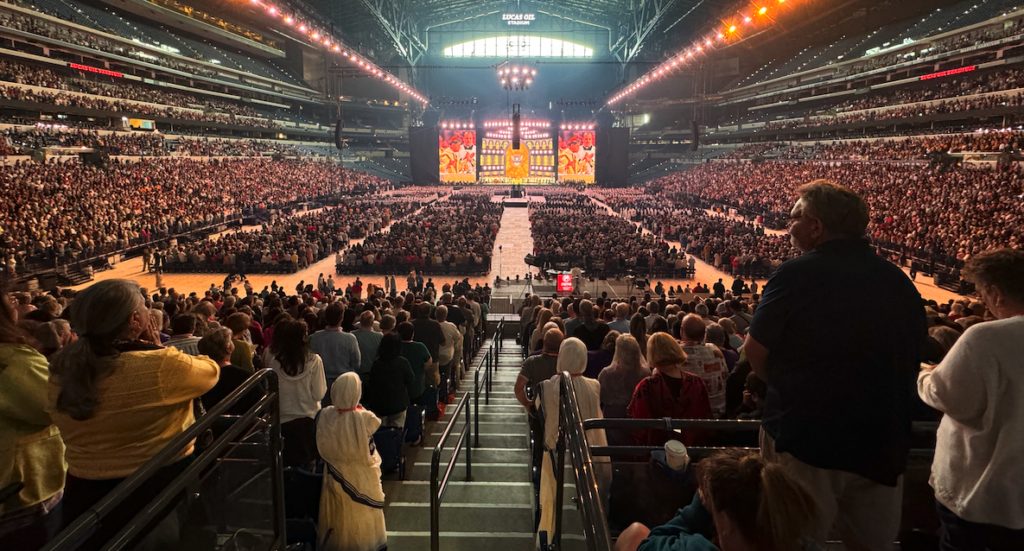
Indianapolis witnessed a historic gathering. It was the first national Eucharistic Congress in 83 years. This tenth congress was attended by 50,000 participants, including more than a thousand priests, some 200 bishops from all over the country, and some from abroad.
Technological advances made it possible on this occasion to enhance the participation of attendees, especially for those who could not be present in person and who connected online to follow the various events from their homes.
Masterful organization at the service of a profound Eucharistic experience
The organization, chaired by Bishop Andrew Cozzens, of Crookston, Minnesota, president of the Committee on Evangelization and Catechesis of the U.S. Bishops, was masterful. All the logistics, the distribution of the Masses, the workshops, the themes, the use of the Convention Center and Lucas Oil Stadium, the communication and use of technology, and the mobilization of 50,000 people from 8:00 a.m. to 8:00 p.m., were exemplary.
A number of well-known figures in the Catholic world were keynote speakers or gave workshops with a large number of interested participants in attendance. These included Cardinal Christophe Pierre; Bishop Andrew Cozzens; Fr. Mike Schmitz; Bishop Robert Barron; Jonathan Roumie – star of the series “The Chosen”, where he plays Jesus; Bishop Daniel Flores, of Brownsville, Texas; Archbishop Gustavo Garcia-Siller, of San Antonio, Texas; Bishop Joseph Espaillat, auxiliary in New York; Dr. Dora Tobar; Bishop Evelio Menjívar, auxiliary of the Archdiocese of Washington and episcopal moderator of MovCom.US, which brings together Movements and New Communities of the USA.
Cardinal Pierre: I come in the name of the Holy Father, the perpetual and visible principle and foundation of unity
The keynote speaker for the first day was Cardinal Christophe Pierre, Nuncio to the United States. He began his address by clarifying in whose name he was addressing the assembly, and emphasizing the mission of the one he represents, saying:
“I come here as the personal representative of the Holy Father to the United States. As such, my being here is a way to express the Pope’s spiritual closeness to you, and his unity with you and with this country. As the Second Vatican Council teaches: ‘The Roman Pontiff, as the successor of Peter, is the perpetual and visible principle and foundation of unity of both the bishops and of the faithful.’”[1] These are words that in other times might be considered redundant, but perhaps today, for the sake of the Church’s unity and the full fulfillment of her mission, it seems essential to repeat them.
Cardinal Pierre continues: “What a gift this is! What a gift this is, that we can be united as a Church through our Holy Father. At the same time, what brings us together at this Congress — the Holy Eucharist — is also an immense gift for unity. As St. John Paul ii said, ‘The Eucharist is the sacrament and source of the Church’s unity.’” [2]
And advancing on the theme of unity, he quotes the decisive words of Jesus in John 17:21: “Perhaps our principal prayer for this Eucharistic Congress should be this: that we, as Church, may grow in our unity, so that we may be more fruitful in our mission. This was the prayer Jesus addressed to the Father on the night he instituted the Eucharist: ‘That they all may be one, as you, Father, are in me and I in you, that they also may be one in us, so that the world may believe that you have sent me.’”
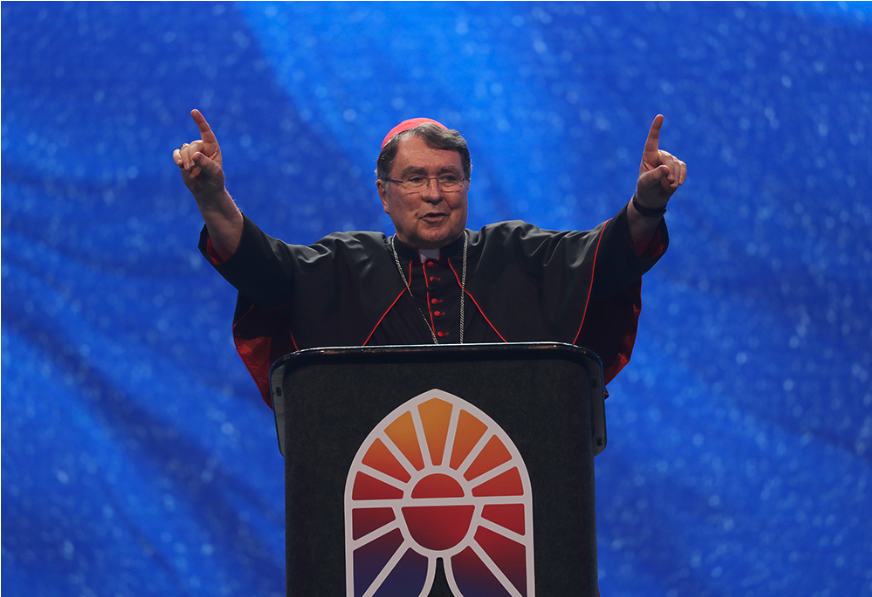
Bishop Cozzens: Encounter and mission, the two hinges on which the Eucharistic revival rests
In an interview with Vatican News, Bishop Cozzens says the U.S. bishops were inspired by Pope Francis’ programmatic 2013 Apostolic Exhortation Evangelii Gaudium on proclaiming the Gospel in today’s world. “Encounter and mission are the two staples of our Eucharistic Revival in Congress” he expressed, explaining that ”We want people to encounter Jesus and then send them on mission, which we got, of course, from Evangelii Gaudium.”
And he continued, “Our goal is to help the Church in the United States make this transformation that Pope Francis has called for, the missionary transformation, so that we can become the missionaries we’re called to be.”
He added that “we feel really honored to be gathered at a time in our world when there’s a real need for Jesus and His life. We know that Jesus in the Eucharist gave His life for the world. And we want to be set on fire to be able to bring Him to those who are most in need.”
Hispanic presence in Congress
Hispanics make up half of all Catholics in the United States. Four Eucharistic pilgrimages were made to prepare the Congress in the hearts of the people. They departed from the four corners of the U.S. and traveled for 60 days, to converge in Indianapolis. They were attended by 250,000 people, of whom an estimated 50% were Hispanic. On the other hand, of the 50,000 participants in the Congress, only 10% were Hispanic. An open question remains… why?
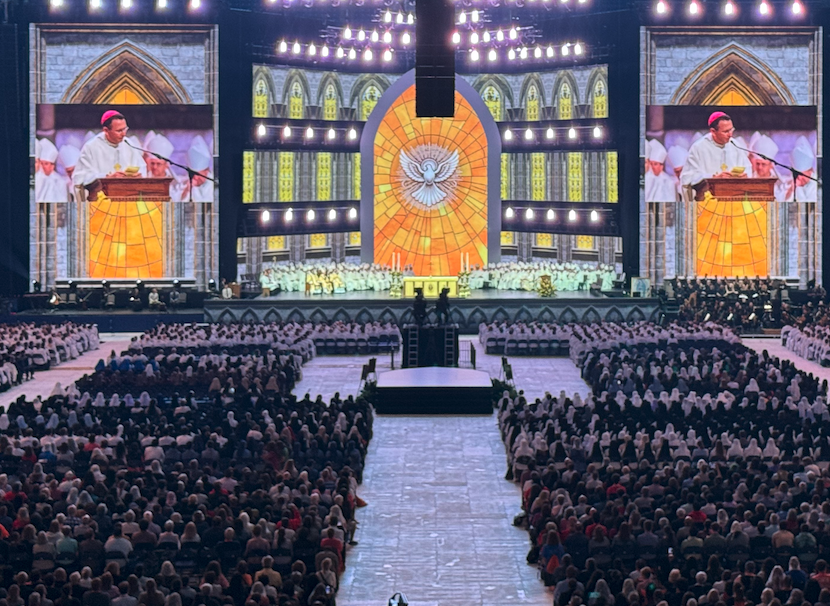
Listening for God’s signs for the future
At the close of the Congress, Bishop Cozzens asked those present if they would like another Eucharistic Congress. The crowd responded passionately with a “Yes!” He then asked: What do you think of the year 2033, 2000 years after the Redemption? The crowd’s response was immediate. Those present nodded jubilantly to this proposal, with shouts of acclamation.
It seems excellent to me, taking the pulse of the signs of God, to take advantage of this special moment to keep alive the apostolic and missionary fire of the Catholic faithful. The Congress was a great success. The United States had never experienced a national meeting of these characteristics. The Eucharistic and missionary revival was powerful and profound, and it will have an unthinkable impact on the souls of thousands and thousands of people in the country.
How to continue now?
Does the Church in the United States have a common, integral pastoral plan?
Now that we are thinking about the next Eucharistic Congress, I wonder if the Church in the United States has a simple, comprehensive plan for the coming years. Not that I know of any other country that does, but that doesn’t deter me from delving deeper into the issue for the United States.
Raíces y Alas Congress and the four pastoral priorities
In April 2022, the Raíces y Alas Congress took place in Washington, DC, organized by the National Catholic Council for Hispanic Ministry (NCCHM), which integrates the main Hispanic pastoral institutions in the United States. It was attended by 400 pastoral leaders, 15 bishops, eight offices of the U.S. Episcopate, three Vatican secretaries, and leaders of CELAM, the Latin American Episcopal Council, including its president, Bishop Miguel Cabrejos.
The V National Encuentro de Pastoral Hispana, which developed for five years in parishes and dioceses of the country, had its high point in 2018 in Dallas, Texas, with the participation of 3,000 leaders. From it emerged 28 pastoral priorities aimed at pastorally serving Hispanics, who make up 50% of the Catholic Church in the USA. The Congress Raíces y Alas summarized the 28 priorities in four, as a powerful underpinning of Hispanic pastoral ministry in the country. They are
- youth ministry,
- family,
- pastoral formation
- and social justice.
The Council for Hispanic Ministry continues to work on these four priorities on an ongoing basis, both in its general meetings and through webinars organized in partnership with CEBITEPAL, the Formation Center of CELAM, the Latin American Episcopal Council, and in various national and international forums, including the 28 pastoral priorities that emerged from the V Encuentro.

Connecting the dots: Eucharistic Congress, the 4 priorities and pastoral care in the USA
I see a good connection between the suggestion of an upcoming Eucharistic Congress in 2033 with the pastoral efforts of the dioceses and committees of the Episcopate, with the four pillars the main Hispanic institutions of the country work with organically. And this, within the framework of the spirit of the universal Church calling us to offer ourselves as missionary disciples, who go out in search of everyone in the peripheries. Will it not be possible to work as a Church in a common pastoral plan that arises from dialogue and listening, to give the Holy Spirit the leading role in its conduction?
The two wings: the Eucharistic Jesus, and the Jesus who is man and God among us
We have celebrated the Eucharistic Christ in the four corners of the country and at the Congress. It is an experience of incalculable value. It is a wing on which the Church is sustained: the sacraments, which fortify us in faith and send us forth. Starting from the Eucharist, we can serve our brothers and sisters.
Perhaps the time has come to fortify the other wing, so that the flight of the Church may be balanced: the Jesus who walked in Galilee and who today walks among us. Jesus in the atheist, Jesus in the helpless, Jesus in the broken marriage, Jesus in the trans young person, Jesus in the woman who wants to have an abortion, Jesus in the woman who has had an abortion, Jesus in the Christian family, Jesus in the young person with ideals, Jesus in the anguished young person with no direction, Jesus in the drug addict, Jesus in the migrant, Jesus in the oppressed, Jesus in the hungry, Jesus in the obsessed. In a word: the Jesus of the peripheries. Of those who feel different and to whom we are called to listen, embrace and accompany in the name of the Lord.
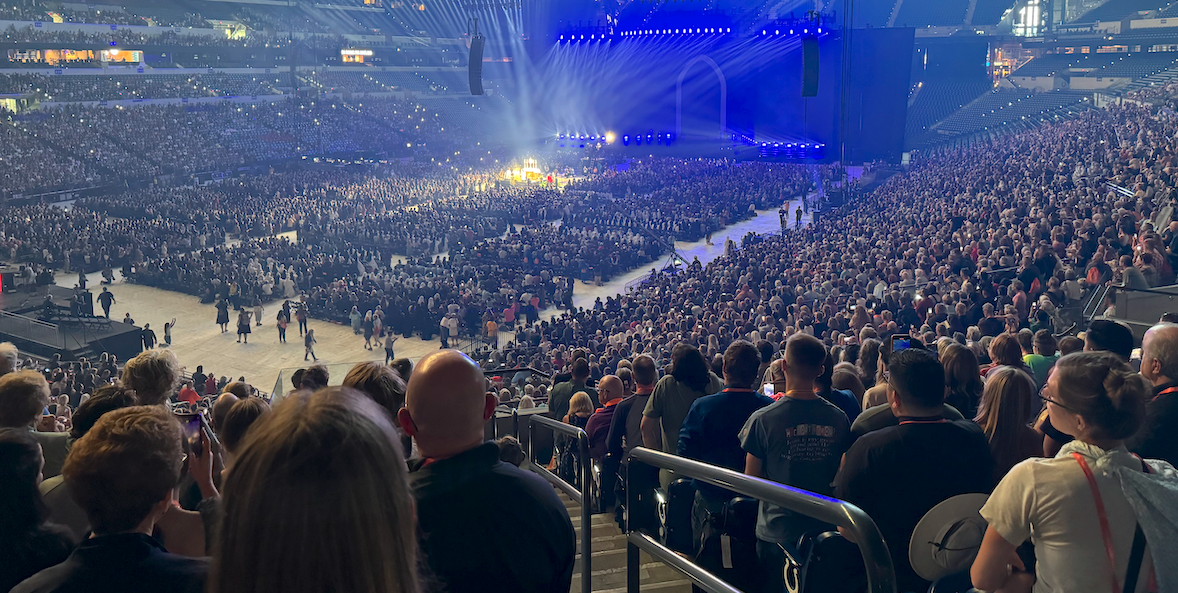
Out of six millennials who leave the Church, only one joins it
No matter which parish you go to for Mass, most of the faithful are adults between the ages of 35 and 80. Fathers and mothers bring their young children – up to the age of 12? With luck! And there is a tremendous emptiness from where young people shout: Don’t they realize that we are missing? What are you going to do to make us come back? Or better yet… so that we don’t leave after Confirmation?
Martin Soros mentioned at the Congress Raíces y Alas that Bishop Robert Barron, addressing the Assembly of Bishops in November 2019, when he was chairman of the US Bishops’ Committee on Evangelization and Catechesis, reported that out of six millennials leaving the Church, only one enters. In response to this pressing phenomenon, the young man pointed out the imperative importance of analyzing this fact in order to address this reality as a Church.
Martin presented his suggestions to respond to the aforementioned problems, so that young people remain passionate in the Church. He explained the importance of listening to them, to understand their perspectives, interests, conflicts, anxieties, desires and ideals, in order to be able to generate a personal connection with them, pointing out that a key element in evangelization lies in the personal relationship with children, adolescents and adults.
He mentioned that while the leaders were concerned about issues far from their lives, young people did not feel connected, mentioning that only when young people feel identified with persons who are for them a testimony of life, does the desire of holiness arise in them. This is how their faith is deepened.
When we experience a great love, everything becomes part of that love
It is not intellectuality or a curriculum that attracts young people to feel part of the Church, but especially the deep experiences of human connection with catechists or youth leaders and the community that motivates them and allows them to deepen their spiritual world. When this human integration is forged, the passion to be formed and to aspire to sanctity emerges. We have seen for centuries that if we cling to the supernatural world without a solid human affective foundation, without strong positive human bonds, we will be building a house of cards that can collapse at any moment.
Pope Francis quotes in his post-synodal apostolic exhortation Christus Vivit, #212, Romano Guardini, who expresses:
“When we experience a great love, everything becomes part of that love.”
This is true for all areas of pastoral ministry. When we develop a deep community, when we are living witnesses of Jesus’ love, when we experience a deep human love in the Church, we will be affirming the pillars of youth ministry, family ministry, pastoral formation and social justice.

Great challenge of the Church in the USA: to listen to the voice of God in the hearts of our brothers and sisters
I dream of a congress for catechists, pastoral agents and all missionary disciples on the move. We could say, one similar to the Convocation of Catholic Leaders “The Joy of the Gospel in the USA”, which took place in 2017 in Orlando, Florida, organized by the US Bishops.
In this case, a congress whose primary purpose is to listen. To listen to the young people of the peripheries, to listen to the divorced, to listen to the displaced, to listen to those who have left the Church wounded. Whose purpose is to get to know the souls of people who no longer go to Mass, but also of those who go to daily Mass. This would be an inverse process to the one we are accustomed to carry out. Instead of teaching and imposing “the truth”, as we have done in saecula, the emphasis would now be on wanting to learn the truth and the love of God that is manifested in those souls, desperate for redemption and the love of God, which is manifested through ours.
Obviously, then the field is opened to try to give answers. And I say “try” because I agree with Pope Francis that the theologian who has perfect answers for everything is a mediocre one. Whoever wants to be filled with the Holy Spirit, must empty himself of personal agendas and leave his comfort zone, to embark on new paths of inner freedom and mission.
I know that this may be a utopia. I know it is risky. But if we as Christians don’t take risks in the Lord, what are we living for?

A ministry listening: the Pope meets with a young atheist, a non-binary girl…
I cannot recommend more warmly a short video by José Antonio Rosas, General Director of the Academy of Catholic Leaders, who makes an analysis of a documentary in which Pope Francis meets with 10 young people from the most diverse realities: a non-binary girl, a lesbian girl, an atheist young man, a feminist abortion activist… who ask him all kinds of questions, without censorship.
Rosas states: “To heal the wounds, you must first listen and touch them, with deep sympathy, with tenderness, recognizing even in the most conflictive and contradictory situations the core of truth in them.” This simple video can help us understand the importance of the pastoral path of listening, which is called to reverse the pastoral perspective from the starting point of humility and closeness of heart.
And definitely not! It is not about validating anything. It is about listening and loving with the heart of God.
Pastoral care of the Jesus of flesh-and-blood
A major inspiration for organizing the Eucharistic Congress was the startling 2019 statistic that one-third of Catholics did not believe in the real presence of Christ in the Eucharist.
I wonder now what percentage of Catholics in the U.S. identify with the Jesus who was born and lived poor, stripped of ideologies and committed to his people?
What percentage of Catholics …
- bends down to reach out to the homeless person on the street?
- helps the migrant?
- visits the prisoner?
What percentage of parishioners go to the homeless shelter to serve food and accompany with their presence?
What percentage of parishes have a youth group that meets weekly? A couples’ group?
Challenge for Bishops in the US
With this powerful Congress we have deepened our love for Jesus in the Eucharist. And we know that the pillars are encounter and mission. Are we ready for the mission of the pastoral ministry of the Jesus of flesh and blood, to live more deeply our pastoral and social goals as a Church of the US?
The challenge remains for the Bishops of the United States to find, in communion, the paths to which the Holy Spirit invites us to assume an integrating pastoral program, which impels us to deepen our spirituality, and at the same time, which motivates us to go in search of the Lord in the peripheries.
———————-
Keynote speakers and main speakers at workshops (no one in Spanish):
Address of the Nuncio, Cardinal Christophe Pierre, at the Eucharistic Congress:
Video of young Martin’s brief address at the Raíces y Alas Congress:
José Antonio Rosas’ reflection on Pope Francis’ meeting with 10 young people:
https://www.youtube.com/watch?v=IVM-YrayjRQ&list=PLpPo2yhTnfavFTr-rSC6fk7kkNXANXra6&index=2&t=0s
[1] Second Vatican Council, Dogmatic Constitution on the Church Lumen Gentium, November 21, 1964, 23.
[2] Pope St. John Paul II, General Audience, November 8, 2000, 1.
Related
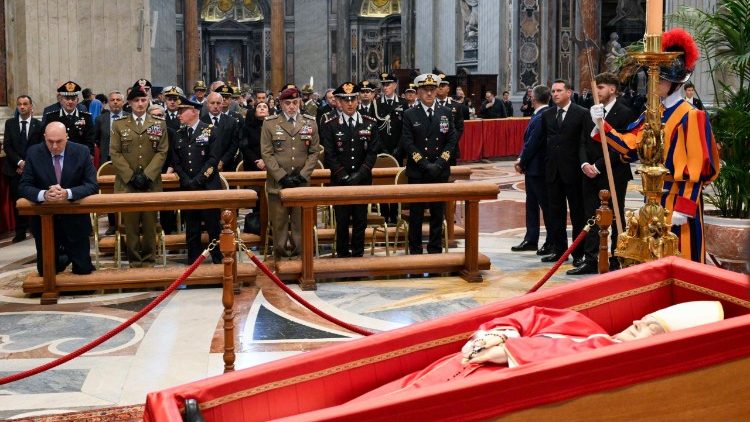
The heart of the Church beats between mourning and hope
Exaudi Staff
24 April, 2025
2 min
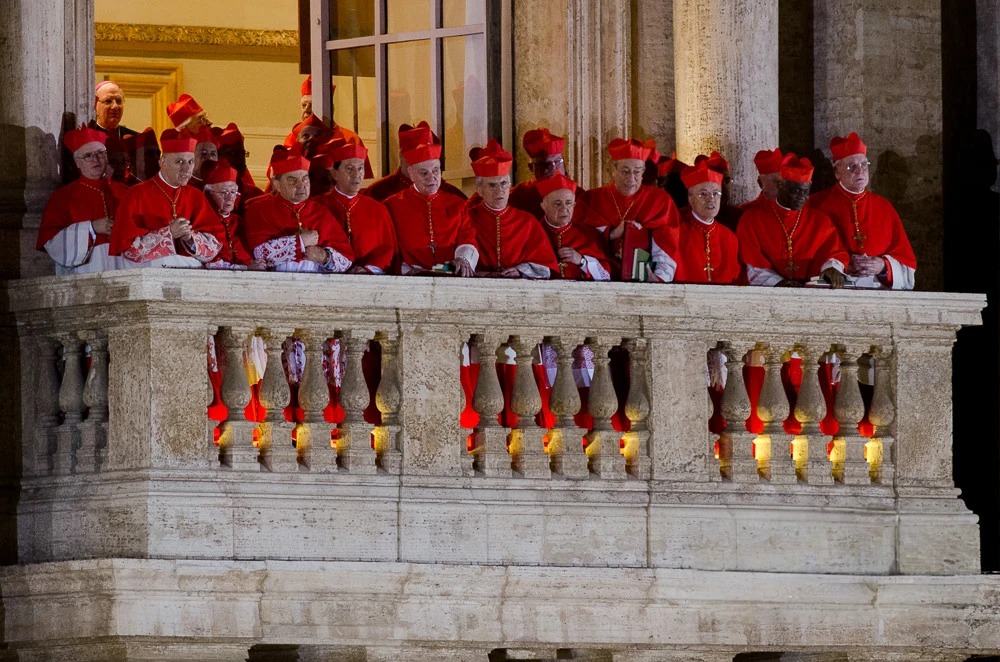
What is a Conclave? The Process That Elects the New Pope
Exaudi Staff
24 April, 2025
7 min

Current Status of the College of Cardinals
Exaudi Staff
23 April, 2025
14 min

The Challenges of the Next Pope and the Path of Grace
Javier Ferrer García
23 April, 2025
4 min
 (EN)
(EN)
 (ES)
(ES)
 (IT)
(IT)

